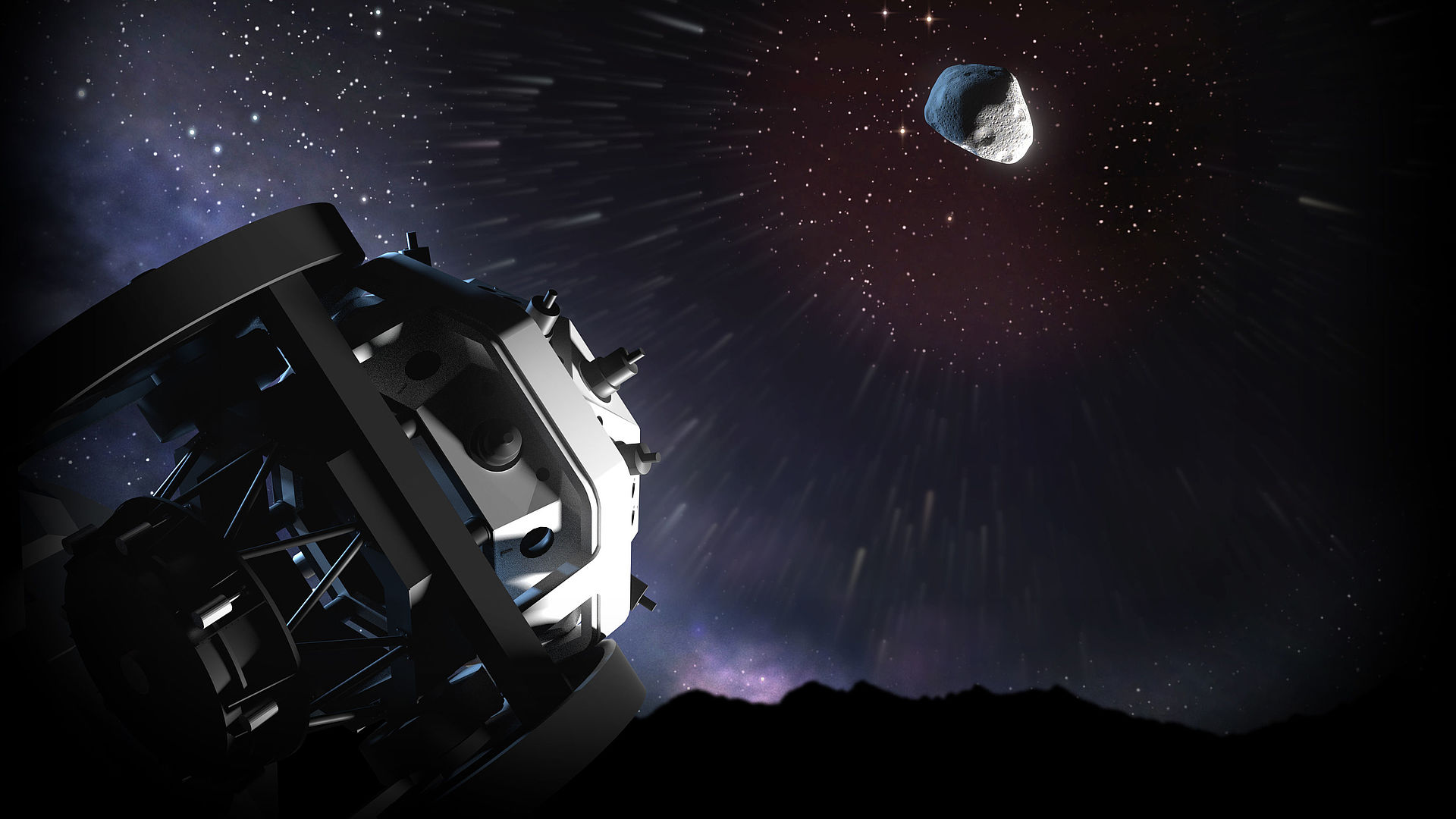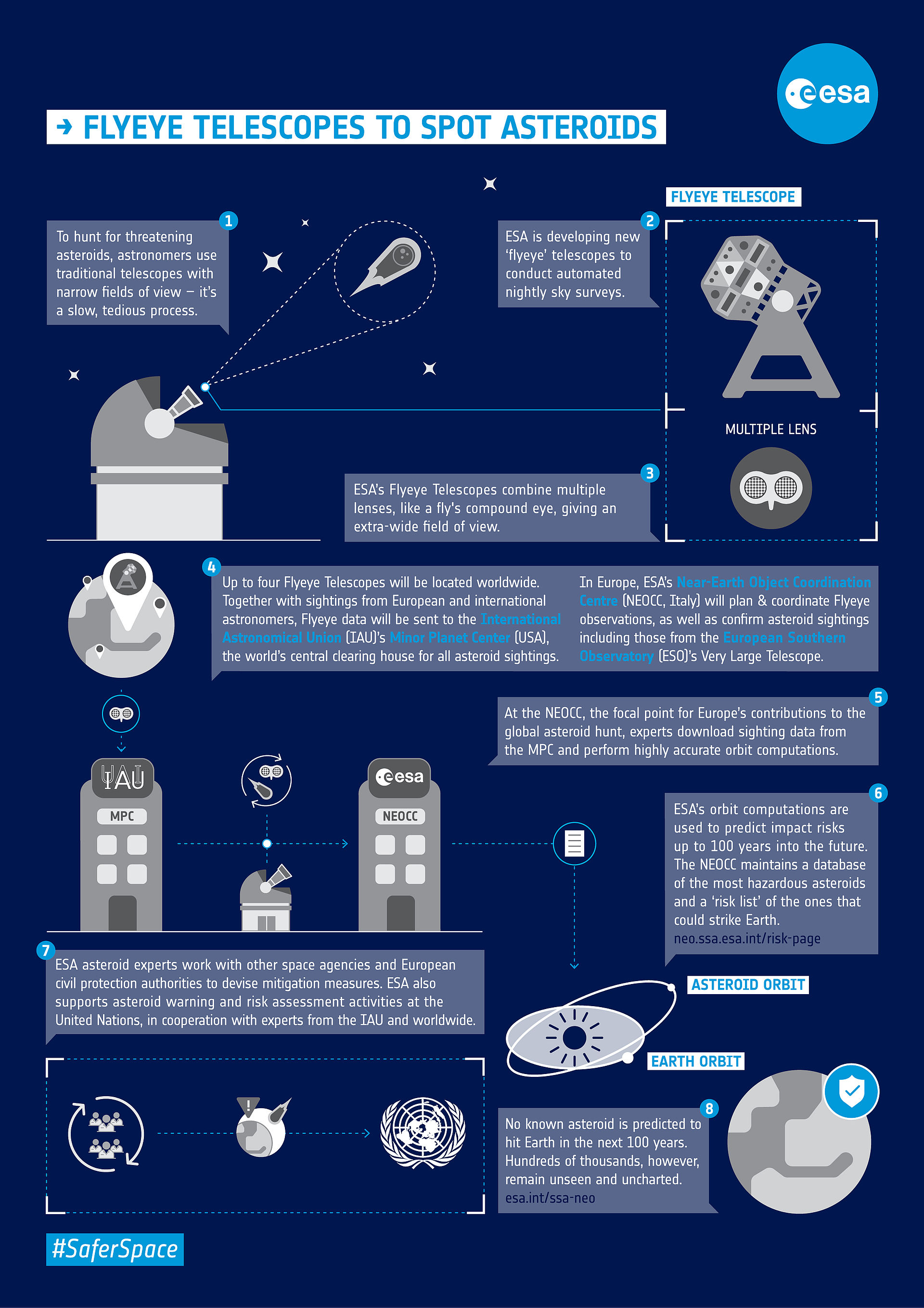In the recent past, there has been an increase in the number of reports of asteroids that have come close to colliding with the Earth. As recently as on October 10, 2019, ESA extended its list of risks to include asteroid “2019 SU3”, which could potentially hit the Earth in September 2084. In July 2019, asteroid “2019 OK” had passed the Earth almost without eing detected. And the asteroid known as Apophis or the “God of Chaos” also caused some conster nation as it is expected to pass us at a distance of around 30,000 kilometers, thus coming dangerously close to the Earth. What can we do to protect ourselves from these risks?
900 potentially dangeours near-Earth-objects
In order to find an answer to this question, it is crucial to broaden our knowledge of asteroids because what we already know is that statistically we must expect an asteroid impact capable of wreaking havoc every few centuries. The more we know about asteroids – from their discovery and identification, to their trajectory and composition – the better we can prepare for day X, when an asteroid of a potentially dangerous size (i.e. with a diameter of more than 100 meters) is heading for our planet. 900 potentially dangerous “near-Earth objects” are currently being monitored. Engineered and assembled by OHB Italia in Milan, ESA’s Flyeye telescope is to be used to support observations from Sicily in Italy in the near future. The Flyeye is an optical instrument with a very large field of view and high resolution. It replicates the complex structure of the eye of a fly, which is the reason for its name.
Home at an altitude of 1,865 meters
The telescope will be able to detect celestial bodies with a diameter of as little as 40 meters three weeks be fore an impending impact with the Earth. “As far as I am concerned, our work is always particularly valuable when OHB employees’ expertise can make a meaningful contribution to humankind,” says Marco Fuchs, CEO of high-tech group OHB SE.
The telescope is expected to be shipped from Milan to Sicily in 2023. Final assembly on the mountain of Mufara, at an altitude of 1,865 meters, will be completed in the course of next year, meaning that Flyeye is expected to be ready for operation at the end of 2023. ESA is providing the local infrastructure in conjunction with the Italian space agency ASI. According to ESA, several Flyeye telescopes will be installed around the world in the future. The data collected by Flyeye will be sent to the Minor Planet Center (MPC) operated by the International Astronomical Union in the United States together with data obtained by European and international astronomers. The MPC is the international contact point for asteroid sightings. ESA’s Near-Earth Object Coordination Center (NEOCC) in Italy will be planning and coordinating the deployment of the Flyeye. The data gained from the “Very Large Telescope” installed in Chile will also be utilized for this purpose. ESA’s calculations should then allow fore casts to be made for up to 100 years in advance. Even though there is unlikely to be any collision with the Earth in the next 100 years, hundreds of thousands of asteroids remain undetected and unaccounted for.



